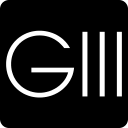/ factorpad.com / stocks / f64xnr.html
An ad-free and cookie-free website.
Our quantitative data points are meant to provide a high-level understanding of factors in equity risk models for G-Iii Apparel Group Ltd. Portfolio managers use these models to forecast risk, optimize portfolios and review performance.
We show how GIII stock compares to 2,000+ US-based stocks, and to peers in the Manufacturing sector and Hosiery and Sock Mills industry.
Please do not consider this data as investment advice. Data is downloaded from sources we deem reliable, but errors may occur.
 G-III designs, sources and markets apparel and accessories under owned, licensed and private label brands. G-III's substantial portfolio of more than 30 licensed and proprietary brands is anchored by five global power brands: DKNY, Donna Karan, Calvin Klein, Tommy Hilfiger and Karl Lagerfeld Paris. G-III's owned brands include DKNY, Donna Karan, Vilebrequin, G.H. Bass, Eliza J, Jessica Howard, Andrew Marc and Marc New York. G-III has fashion licenses under the Calvin Klein, Tommy Hilfiger, Karl Lagerfeld Paris, Kenneth Cole, Cole Haan, Guess?, Vince Camuto, Levi's and Dockers brands. Through its team sports business, G-III has licenses with the National Football League, National Basketball Association, Major League Baseball, National Hockey League and over 150 U.S. colleges and universities. G-III also distributes directly to consumers through its DKNY, Karl Lagerfeld Paris and Vilebrequin stores and its digital channels for the DKNY, Donna Karan, Vilebrequin, Karl Lagerfeld Paris, Andrew Marc, Wilsons Leather and G.H. Bass brands.
G-III designs, sources and markets apparel and accessories under owned, licensed and private label brands. G-III's substantial portfolio of more than 30 licensed and proprietary brands is anchored by five global power brands: DKNY, Donna Karan, Calvin Klein, Tommy Hilfiger and Karl Lagerfeld Paris. G-III's owned brands include DKNY, Donna Karan, Vilebrequin, G.H. Bass, Eliza J, Jessica Howard, Andrew Marc and Marc New York. G-III has fashion licenses under the Calvin Klein, Tommy Hilfiger, Karl Lagerfeld Paris, Kenneth Cole, Cole Haan, Guess?, Vince Camuto, Levi's and Dockers brands. Through its team sports business, G-III has licenses with the National Football League, National Basketball Association, Major League Baseball, National Hockey League and over 150 U.S. colleges and universities. G-III also distributes directly to consumers through its DKNY, Karl Lagerfeld Paris and Vilebrequin stores and its digital channels for the DKNY, Donna Karan, Vilebrequin, Karl Lagerfeld Paris, Andrew Marc, Wilsons Leather and G.H. Bass brands.
Many of the following risk metrics are standardized and transformed into quantitative factors in institutional-level risk models.
Rankings below represent percentiles from 1 to 100, with 1 being the lowest rating of risk.
Stocks with higher beta exhibit higher sensitivity to the ups and downs in the market. (↑↑)
Stocks with higher market capitalization often have lower risk. (↑↓)
Higher average daily dollar volume over the past 30 days implies lower liquidity risk. (↑↓)
Higher price momentum stocks, aka recent winners, equate to lower risk for many investors. (↑↓)
Style risk factors often include measures of profitability and payout levels.
Companies with higher earnings generally provide lower risk. (↑↓)
Companies with higher dividend yields, if sustaintable, are perceived to have lower risk. (↑↓)
/ factorpad.com / stocks / f64xnr.html
A newly-updated free resource. Connect and refer a friend today.